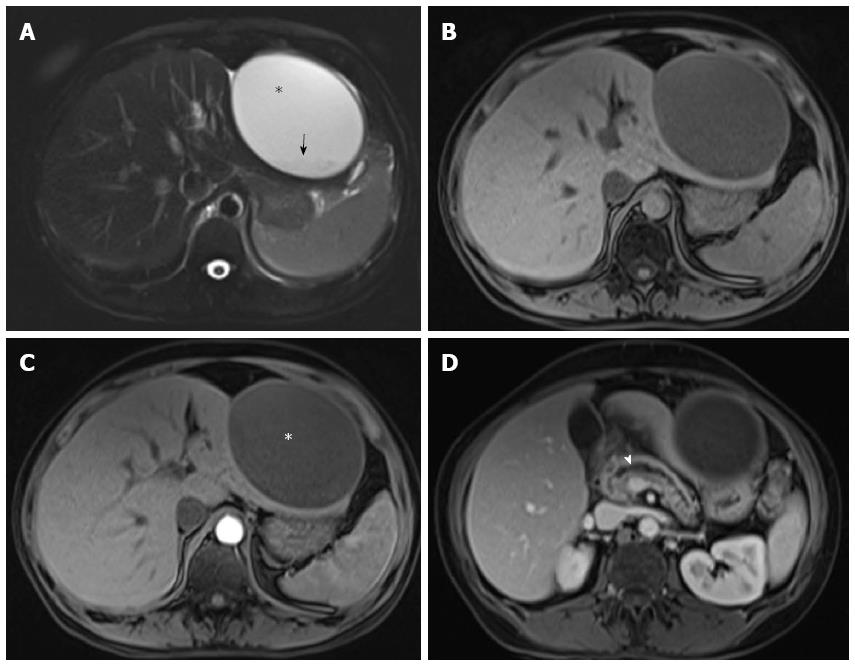Copyright
©2014 Baishideng Publishing Group Inc.
World J Gastroenterol. Oct 28, 2014; 20(40): 14760-14777
Published online Oct 28, 2014. doi: 10.3748/wjg.v20.i40.14760
Published online Oct 28, 2014. doi: 10.3748/wjg.v20.i40.14760
Figure 9 Large pancreatic pseudocyst.
A: Axial single-shot turbo spin-echo T2-weighted (HASTE) image with fat-suppression; B: Axial pre-contrast 3D-GRE T1-weighted image with fat-suppression. Axial post-Gadolinium 3D-GRE T1-weighted image with fat-suppression during (C) the true late hepatic arterial and (D) hepatic-venous phases. There is a large oval shaped thin walled cyst (asterisks) with homogenously increased T2 (A) and decreased T1 signal intensities (B) at the left subdiaphragmatic region, with dependent non-enhancing (C) layering material (arrows) (A, B). The cyst demonstrates mild wall enhancement (C, D) in keeping with a large pancreatic pseudocyst. There is also diffuse pancreatic parenchyma thinning, irregular diffuse main pancreatic ducal dilatation (arrowhead), and pancreatic side-branches ductal prominence in keeping with chronic pancreatitis (D).
- Citation: Manikkavasakar S, AlObaidy M, Busireddy KK, Ramalho M, Nilmini V, Alagiyawanna M, Semelka RC. Magnetic resonance imaging of pancreatitis: An update. World J Gastroenterol 2014; 20(40): 14760-14777
- URL: https://www.wjgnet.com/1007-9327/full/v20/i40/14760.htm
- DOI: https://dx.doi.org/10.3748/wjg.v20.i40.14760









